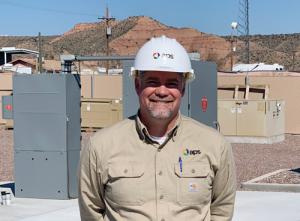Visiting APS
Scott Bordenkircher is Director, Technology Innovation & Integration at Arizona Public Service Company.
PUF's Liz Stipnieks: Give an overview of the storage technology and how APS came to utilize it as we're heading to a visit at the Punkin Center Battery Storage site.

Scott Bordenkircher: When we started to look at storage, one of the biggest arguments for storage, especially illustrated by California, was around capacity and using batteries to store energy wherever that energy might come from and then being able to use it when needed. This was especially important for them as they experienced some of the difficulties around Aliso Canyon as well as their preference for shutting down their nuclear plants and going more toward renewables.
We looked at it from a broader perspective of since we didn't have an immediate capacity need, what was going to be the real value stream of batteries? Our first two energy storage projects, what we call Festival Ranch and McMicken, were two, two-megawatt hour batteries that we installed on feeders highly penetrated with rooftop distributed generation, or rooftop solar.
Our intent there was not only to look at it from a peak shaving capacity perspective of how do we store solar energy during the day and use it at night, which is when our Arizona peak is, but also how can we use those systems to mitigate some of the other difficulties that high levels of rooftop generation cause.

